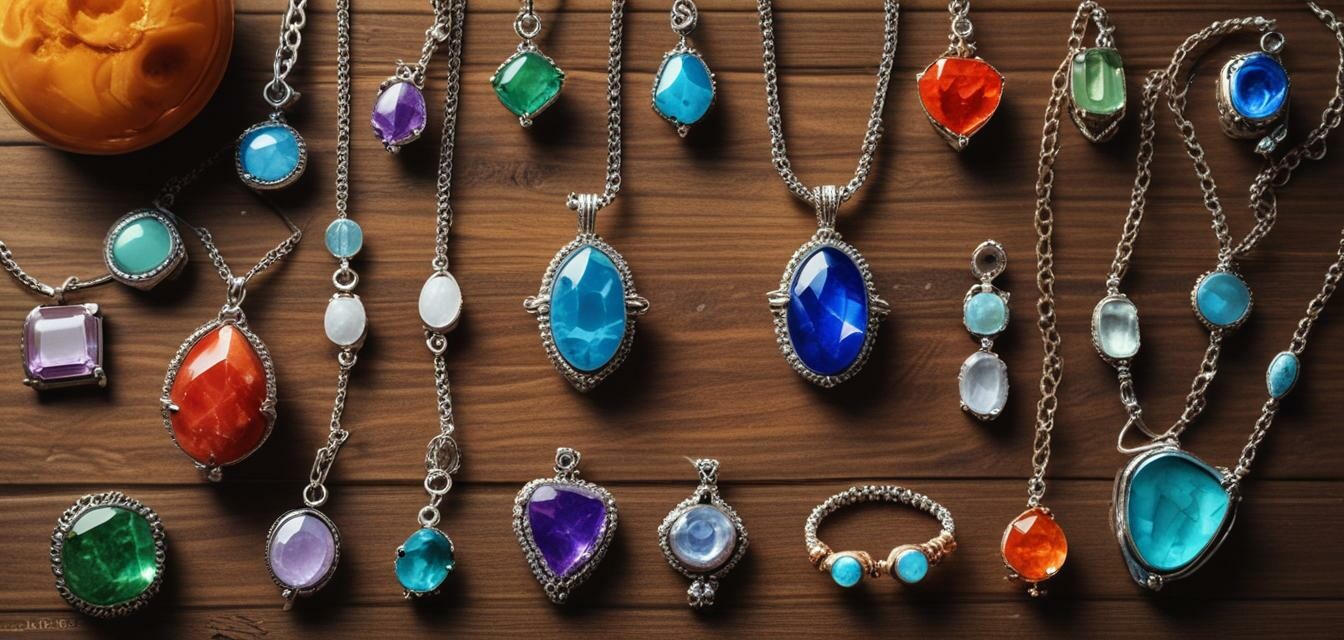
How to choose ethical jewelry for children
Key Takeaways
- Safety of materials is paramount when selecting jewelry for children.
- Opt for brands that emphasize ethical sourcing and sustainability.
- Consider the child's style preferences while choosing designs.
- Look for brands with transparency in their production practices.
- Encourage children to understand the importance of ethical consumption.
Choosing the right jewelry for children can be a fun yet daunting task. With a multitude of options out there, it’s essential to navigate this process carefully, especially when it comes to ethics in jewelry production. Ethical jewelry is not just about aesthetics; it encompasses safe materials, sustainable practices, and consideration for the artisans who create these pieces. This article will guide you through how to choose ethical jewelry for children, focusing on safety, style, and sustainability.
Why ethical jewelry matters
When looking for children's jewelry, several factors play a key role in making ethical choices. Here are some reasons why ethical jewelry is of great importance:
- Health and Safety: Many cheap, mass-produced jewelry items can contain harmful substances. Ethical brands often prioritize the use of non-toxic materials.
- Sustainability: Opting for sustainable practices helps reduce harm to the environment. Ethical brands often use recyclable or responsibly sourced materials.
- Supporting Artisans: Choosing ethical jewelry means supporting skilled artisans who receive fair wages and work in safe conditions.
- Education: Teaching children about ethical consumption instills values that can last a lifetime.
Key considerations when choosing jewelry for children
There's much to think about when selecting jewelry for children. Below are some key considerations to keep in mind:
| Consideration | What to Look For |
|---|---|
| Material Safety | Jewelry made from non-toxic and hypoallergenic materials like stainless steel, silver, and natural gemstones. |
| Durability | Sturdy designs that can withstand the wear and tear of children’s play. |
| Design Appeal | Fun and colorful designs that reflect the child’s personality and preferences. |
| Ethical Production | Brands that provide transparency in sourcing materials and labor practices. |
| Size and Fit | Proper sizes that won’t easily slip off or cause discomfort. |
How to start your search for ethical jewelry
Now that you understand the importance of ethical choices, how do you begin your search? Here’s a step-by-step guide:
- Research Brands: Look for brands that specialize in children’s jewelry. Seek out those that have clear policies on sourcing and production practices. Check out our sustainability practices for insights.
- Read Reviews: Before making a purchase, read reviews from other parents to gauge quality and safety perception.
- Visit Local Artisans: Explore local markets or artisan fairs that promote sustainable handmade items. This can be a fun outing for the family!
- Check for Certifications: Look for certifications that indicate support for fair wages and sustainable practices, ensuring a responsible purchase.
- Educate Your Child: Involve your child in the process, explaining the importance of ethical choices and the role they play in making those choices.
Popular materials for children’s ethical jewelry
Understanding the different materials used in jewelry can help you in your selection process. Here are some popular ethical materials:
| Material | Characteristics | Ethical Value |
|---|---|---|
| Stainless Steel | Durable, non-corrosive, easy to maintain. | Low environmental impact and long-lasting. |
| Natural Gemstones | Beautiful, unique designs, wide range of colors. | Can be sourced sustainably; important to check for certification. |
| Recycled Metals | Environmentally friendly, reduces waste. | Supports sustainable practices by reusing existing materials. |
| Organic Materials | Used in designs, includes wood, shells, and fibers. | Typically more sustainable and biodegradable. |
Pros
- Supports sustainable practices and fair trade.
- Creates awareness about ethical consumption.
- Builds a child's appreciation for craftsmanship.
- Safe materials reduce health risks.
Cons
- Ethical options may sometimes cost more.
- Availability can be limited compared to mass-produced choices.
Encouraging ethical habits in children
As parents, promoting ethical choices in jewelry helps shape a child's values. Here are practical tips to instill these habits:
- Discuss Values: Talk about why ethical jewelry is important.
- Make it Fun: Visit ethical jewelry stores together and let your child pick pieces they love.
- Incorporate Learning: Teach kids about gemstones, materials, and the artisans behind the products.
- Lead by Example: Show them your own commitment to ethical purchasing.
By embracing ethical jewelry choices for children, we prepare the next generation for responsible consumption and appreciation of quality craftsmanship. Guided by the principles of safety, style, and sustainability, parents can make informed decisions when selecting jewelry, ensuring a harmonious balance between aesthetics and ethics.
Conclusion
Encouraging ethical jewelry choices for children not only contributes to a better world but also enriches their understanding of the value of quality products and fair trade. By prioritizing safety, sustainable practices, and artisanal craftsmanship, you can help your child develop an eye for beauty that respects the environment and society as a whole. Happy shopping, and may your discussions lead to delightful discoveries!